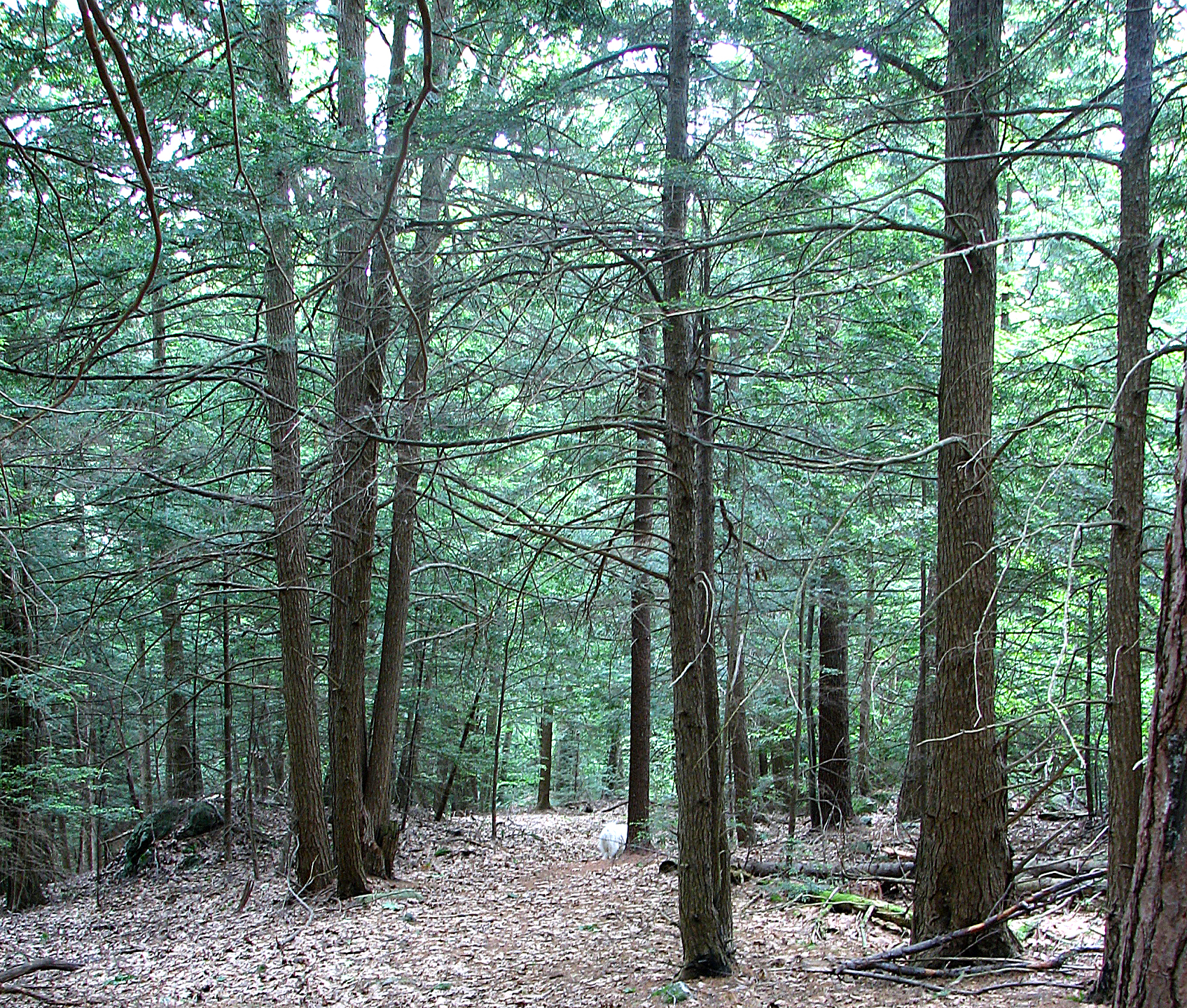The Wild Earth Institute
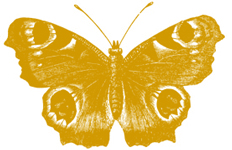
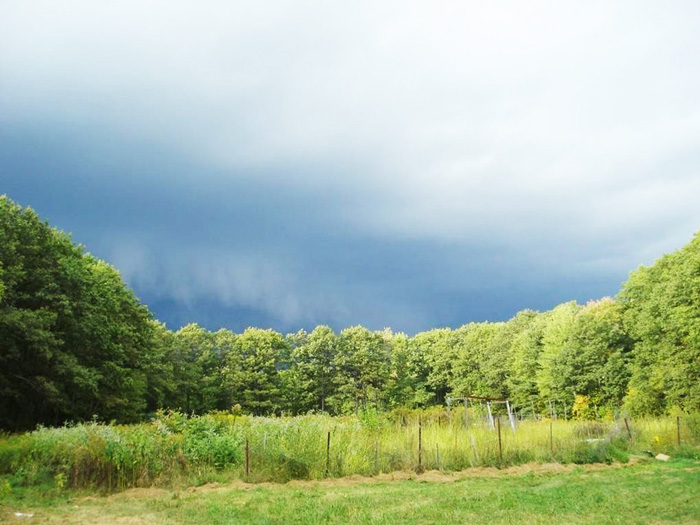
The Wild Earth Institute, Inc.
The University of the Wild is a Special Project of the Wild Earth Institute
The Wild Earth Institute, Inc. is a tax-exempt, educational corporation based on the founding principles of the forty-seven (47) year old (1973-2020) Institute for Environmental Awareness, Inc. established to meet the needs of educational, community, and land protection for personal and planetary well-being. The University of the Wild is one of the components of the Wild Earth Institute.
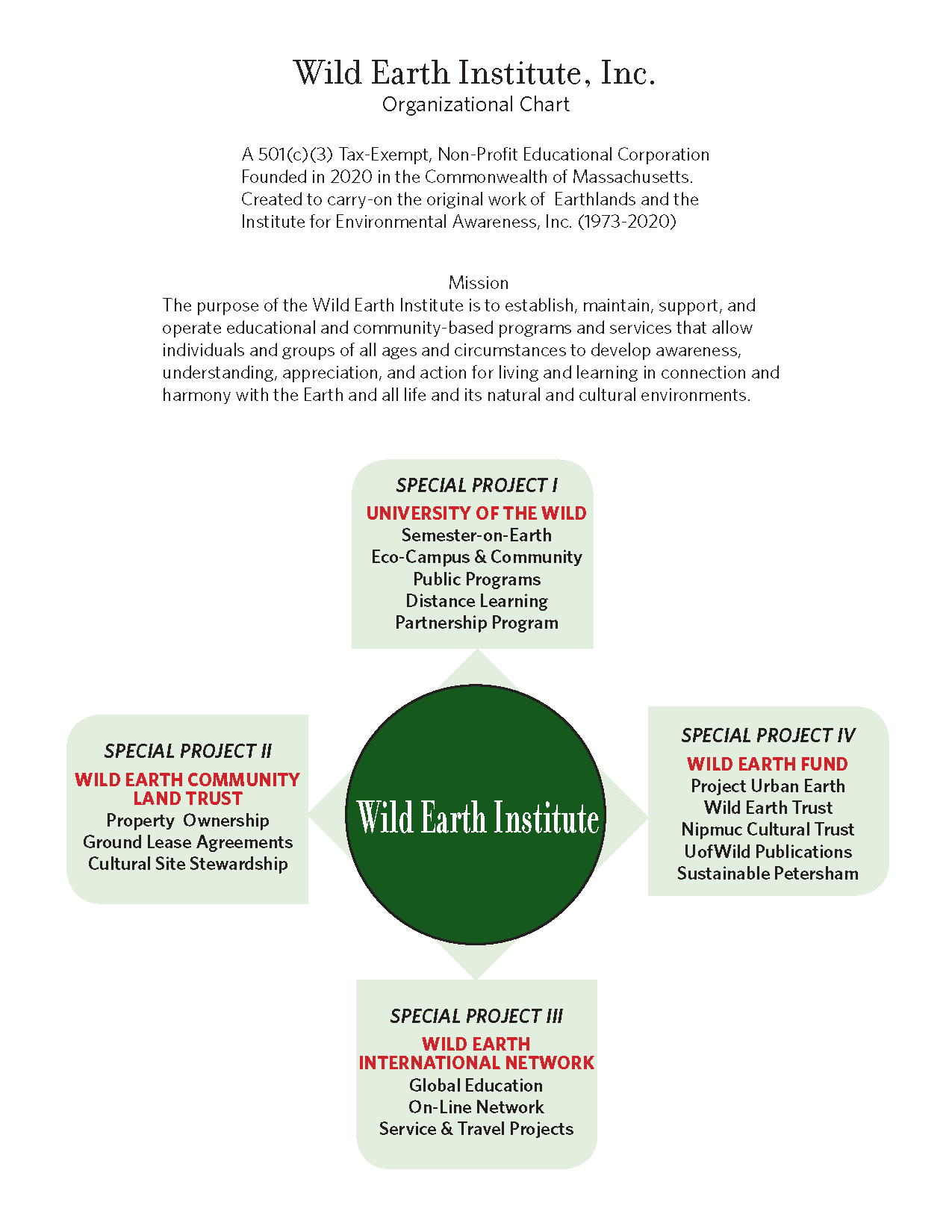
WEI Board of Directors
Dr. Larry Buell, President
Anthony Brogno, Clerk
Barbara Melville, Treasurer
UofWild “Core Group”
Dr. Larry Buell, Founder
Anthony Brogno, Program Coordinator
Lenore Anderson, Staff
Chris Fellows, Special Projects
Margaret Arnet, Financial Advisor
Fred Freeman, Nipmuc Tribal Member
Bill Grover, Green Architect
Barbara Melville, Marketing
Board of Professional Advisors
Dr. Dan Greenberg, Founder of Living Roots and Former President, The Global Eco-Village Network
Julie Woods, Social Justice Activist, Author, Founder, Fans with Cans and Body Temple Love
Fred Freeman, Chair, Nipmuc Cultural Preservation, Inc.
Daniel “Strong Walker” Thomas, Founder & CEO, Indigenous Boston
Professor Ms. Ray Mann, UMass/Amherst, Architecture Department
Glynn Lloyd, Founder, City Fresh Foods; Board Member, Boston Impact
Margaret Arndt, Member, The Evolutionary Hub, Barbara Marx Hubbard Group, Boston
Bill Grover, Green Sustainable Architect; former President, Earthlands/IEA Board of Directors
Marsia (MOTHER TURTLE) Harris, Founder, Stories We Tell Ourselves; songwriter; artist
John Baker, Clark University, Environmental Studies Department; Petersham Conser. Com.
Tina Clark, USA Transition Towns Trainer; Former Director, Greenpeace USA Activist Group
Board of Youth Advisors (15-20 year age group)
Abigail Arndt, Boston Teenager
Nicolas Buell Horschman, Buell Family Member
Henry Buell Horschman, Buell Family Member
Jennifer Albertine, Mt. Holyoke Sunrise Group
Elder Council Group (TBA)
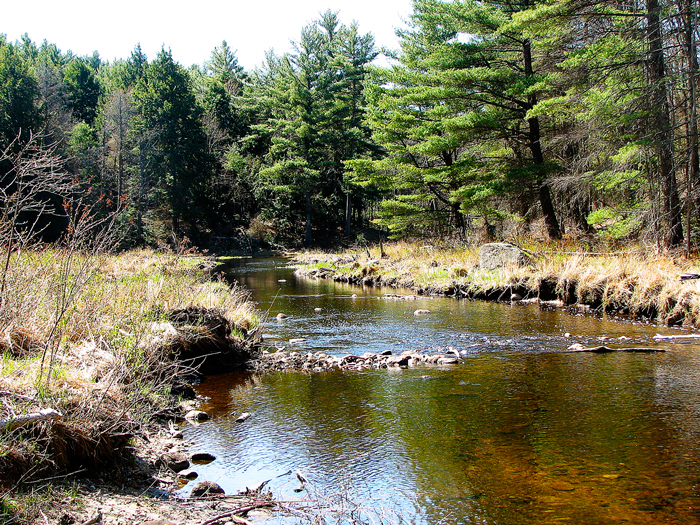
A Special Project of the Wild Earth Institute
The Wild Earth Community Land Trust, Inc.
Vision Statement
Planet Earth is an interconnected, natural ecological system where human beings learn and thrive in sacred harmony with all life. Inspired and informed by the Earth herself, people enjoy conscious, creative, sustainable, and regenerative lives that integrate ecological, social, economic, emotional, and spiritual endeavors.
Mission Statement
The Mission of the Wild Earth Community Land Trust is to acquire, hold, and steward land and buildings in order to preserve, conserve, and otherwise protect and steward such holdings in accordance with the vision and mission of Earthlands, which includes, but is not limited to, Earth-based living and learning, personal transformation, and social justice initiatives.
Goals of the Community Land Trust
The goals of the Wild Earth Community Land Trust are to own property and to provide stewardship and guardianship of all lands used by the Institute and other similar mission-driven organizations and to be a sustainable and regenerative model. Specifically to:
Acquire and hold property in trusteeship for use by the Wild Earth Institute and its Special Projects, other similar mission-driven organizations; and individuals and families aligned with the Earthlands vision;
Field Notes
Today Massachusetts is more than 60 percent forested and ranks eighth nationwide in percentage of forest cover. Some parts of western Massachusetts reach nearly 90 percent.
Wildlands and Woodlands, Harvard Forest, Harvard University
Fortunately, approximately 20 percent (one million acres) of Massachusetts is already protected from development. More than half of this protected land is publicly owned and provides a strong foundation for future conservation efforts. The Executive Office of Environmental Affairs (EOEA) is the largest landowner in Massachusetts…
Wildlands and Woodlands,
Harvard Forest, Harvard University
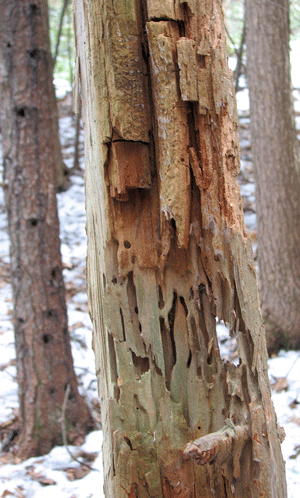
Forests cover 31 percent of the global land area. Approximately half the forest area is relatively intact, and more than one-third is primary forest (i.e. naturally regenerated forests of native species, where there are no visible indications of human activities and the ecological processes are not significantly disturbed).
The total forest area is 4.06 billion hectares, or approximately 5 000m2 (or 50 x 100m) per person, but forests are not equally distributed around the globe.
More than half of the world’s forests are found in only five countries (the Russian Federation, Brazil, Canada, the United States of America and China) and two-thirds (66 percent) of forests are found in ten countries.
The State of the World’s Forests 2020,
Food and Agriculture Organization of the United Nations
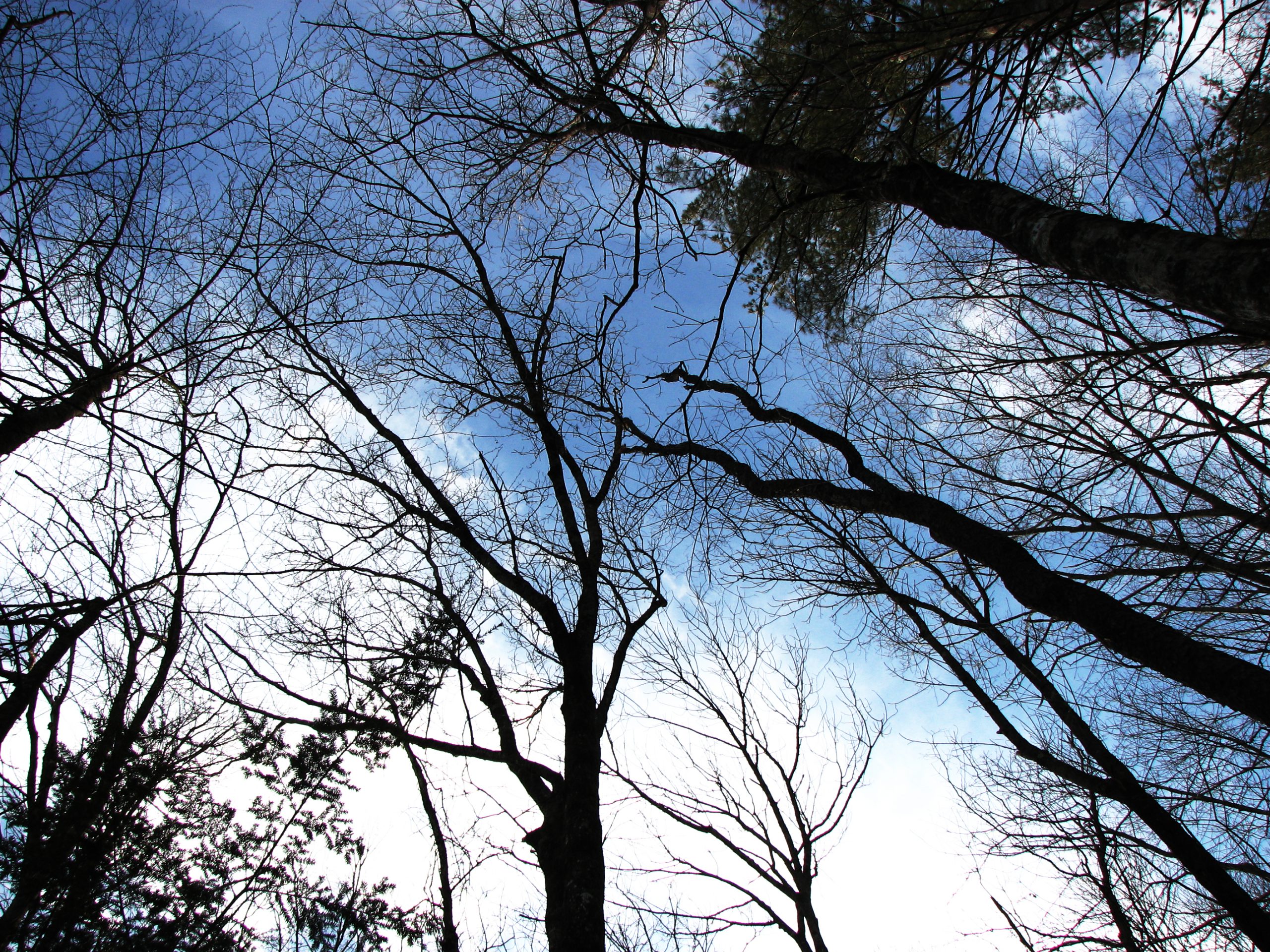
60,082
The GlobalTreeSearch database reports the existence of 60,082 tree species.
45%
Nearly half of all tree species (45 percent) are members of just ten families.
58%
Nearly 58 percent of all tree species are single-country endemics.
As of December 2019, a total of 20,334 tree species had been included in the IUCN Red List of Threatened Species (IUCN, 2019a), of which 8,056 were assessed as globally threatened (Critically Endangered, Endangered or Vulnerable).
More than 1,400 tree species are assessed as critically endangered and in urgent need of conservation action.
The State of the World’s Forests 2020,
Food and Agriculture Organization of the United Nations
Join our email list for newsletters, event listings, and course information.
Find Us on Facebook
